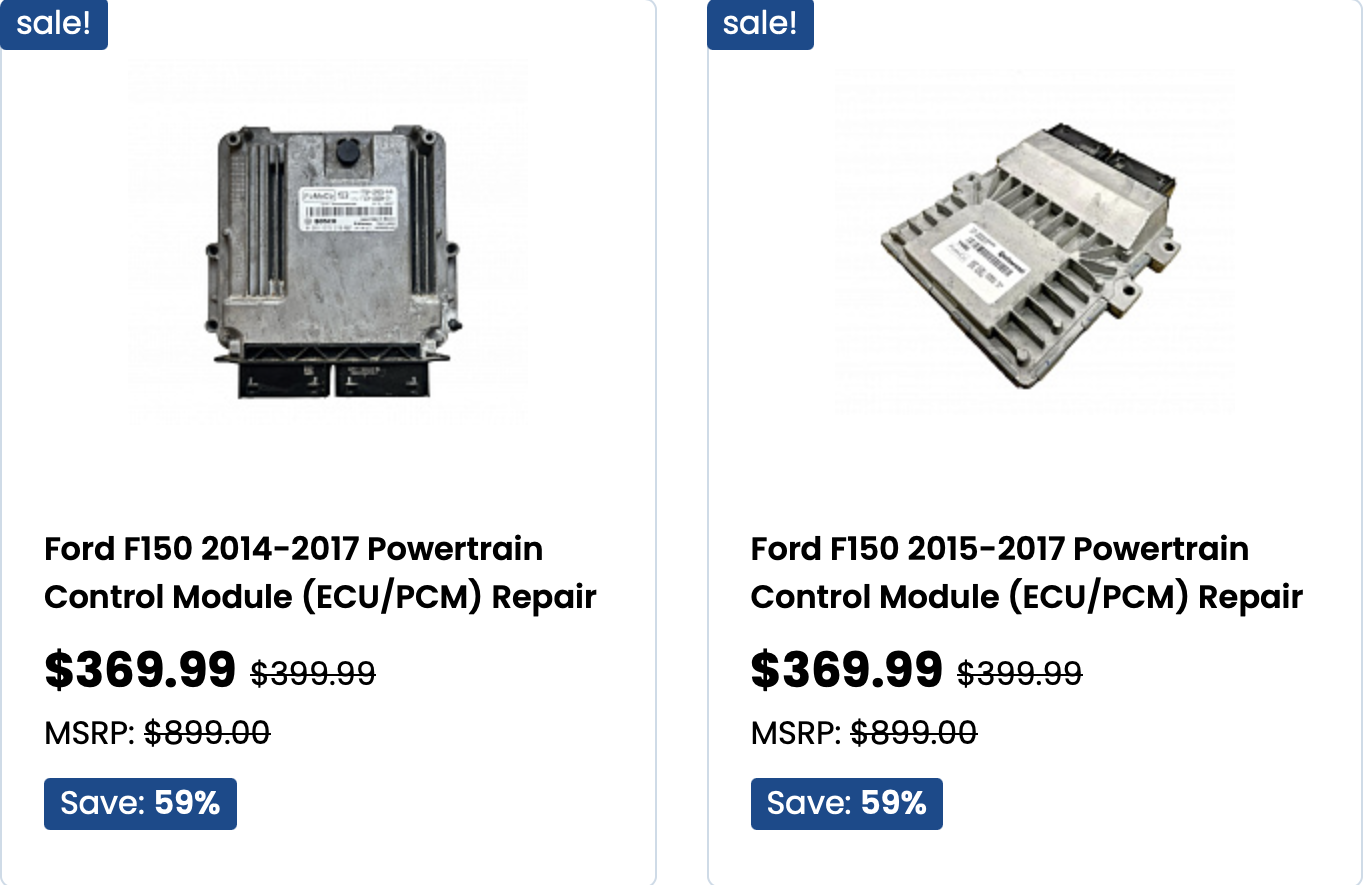

How to Remove a Speed Limiter on Your Vehicle (Safely, Legally, OEM-Correct)
Picture this: you merge onto a 70–75 mph interstate, traffic is flowing, you press the pedal—and your truck hits an invisible wall at 67 mph. Your RPM stabilizes, the throttle is still down, and cars stack up behind you. If that sounds familiar, you’re likely dealing with a software-imposed speed governor left over from a prior fleet calibration or an aftermarket tune. Besides being frustrating, a hard cap can create real-world safety risks during merges, passes, and long grades where maintaining speed with traffic matters.
At UpFix, we see this scenario every week. The pattern is remarkably consistent: a vehicle that once served as a commercial or municipal unit gets sold to a private owner; a fleet cap (often 65–70 mph) remains in the powertrain control module (PCM); and the new owner discovers the issue only on the highway. The right solution isn’t a hotrod tune—it’s returning the vehicle to its correct OEM configuration so it behaves exactly as the manufacturer intended for your VIN and tire/axle setup.
What a Speed Limiter Is and Why Yours Might Be Capped
A vehicle speed limiter is a software parameter in the PCM/ECU that prevents the vehicle from exceeding a configured speed. In some platforms, supporting modules (ABS/BCM/TCM) reference the same configuration. Automakers may set limits tied to tire speed ratings or specific trims; fleet managers often impose stricter caps (e.g., 65–68 mph) via software or telematics for policy and liability reasons.
Why you might be stuck below highway speed
-
Former fleet vehicle: Fleet software or a telematics-managed tune set a hard cap (commonly 65–70 mph). When the unit is sold, the cap isn’t always removed.
-
Aftermarket tuner or “chip”: A previous owner changed speed tables and never restored them to stock.
-
Mismatched configuration data: Changes to tires, axle ratio, or body style can cause conservative limits if the software believes a lower-rated configuration is installed.
What it looks/feels like on the road
-
The vehicle hits a repeatable ceiling (e.g., exactly 67 mph) even at wide‑open throttle.
-
No misfire or surging—just a clean cut of additional acceleration.
-
Cruise control typically won’t set above the cap.
-
Often no diagnostic trouble codes—because the limiter is intentional, not a fault.
Safety, legal, and equipment considerations
-
Obey posted limits. Removing a limiter isn’t a license to speed.
-
Commercial compliance matters. Some commercial applications must retain limiters. If your vehicle is subject to such rules, we won’t remove them.
-
Respect tire speed ratings and condition. Never exceed what your tires can safely handle.
-
OEM-correct is the goal. UpFix restores the calibration to the manufacturer’s intended spec for your VIN—no hot tunes, no emissions or torque‑management defeat.
Options to Remove a Speed Limiter (Without Hacks)
-
Dealer reflash: In theory, a dealer can restore stock calibration. In practice, many won’t adjust speed caps that originated from fleet software or third‑party devices.
-
Handheld/aftermarket tuners: These can alter limits, but often change unrelated tables, risk emissions compliance, and may void warranties.
-
UpFix OEM‑correct reprogramming (recommended): We bench‑program your PCM/ECU to the proper factory specification for your VIN—removing fleet caps while preserving stock drivability and emissions strategies.
Our approach is not a “performance tune.” We revert the limiter to what your vehicle should have from the manufacturer when no fleet restriction is present.
2015 Ford F‑150 SuperCrew (Ex‑Fleet) Locked at 67 mph
Complaint: Truck wouldn’t exceed 67 mph even at full throttle; owner had to shift to the right lane on the expressway to avoid impeding traffic.
Diagnosis: Classic fleet-governor behavior. No drivability faults, just a clean, repeatable speed ceiling with cruise control constrained below the cap.
Procedure (per service video):
-
Disconnect negative battery cable (10 mm) and secure it out of the way.
-
Access PCM, remove top cover, and unplug the two main connectors by squeezing the tabs and rotating the locking levers. Use electronics cleaner if debris makes movement stiff.
-
Remove two 10 mm bracket bolts; lift out the PCM (Continental unit in this case). Photograph labels for records.
-
Send the module to UpFix for bench reprogramming to the OEM configuration for the truck’s VIN (i.e., no fleet cap).
Result: After reinstall, the F‑150 accelerated past 70 mph, then 75–80 mph on the highway with smooth, stock behavior restored—exactly how a non‑fleet configuration should operate. The owner can now maintain normal highway speeds where posted while adhering to all traffic laws.

Why UpFix
-
OEM‑level methodology: We program to the manufacturer‑correct configuration for your VIN, removing only the fleet governor—no performance tuning.
-
Bench service—no cutting, no splicing: Factory harnesses stay intact. UpFix works on a clean bench for precise, repeatable results.
-
Safety‑first philosophy: We will not raise redlines, alter torque management, or defeat emissions monitors. Our goal is factory‑correct drivability.
-
Real‑world validation: Every module is verified on the bench, and we recommend a post‑install road test to confirm smooth acceleration beyond the former cap.
-
Clear communication & support: If tire rating, axle ratio, or regulations mean a limiter should remain, UpFix will tell you before programming.
Our Process
-
Quick intake with UpFix: Share your VIN, year/make/model, and the exact behavior you’re seeing (e.g., “won’t exceed 67 mph; cruise won’t set above 65”). We’ll confirm support and outline packaging.
-
Safe PCM removal (DIY or any competent shop):
-
Shut the vehicle off and disconnect the negative battery terminal. (On many trucks, a 10 mm wrench is used.) Tuck the cable aside so it can’t spring back.
-
Access the PCM (a.k.a. ECU/Powertrain Control Module). Remove the cover if present. Release the two main PCM connectors by pressing the tabs and rotating the locking arms. If dust and grit make the connectors sticky, a brief shot of electronics contact cleaner can help.
-
Remove the PCM bracket fasteners (commonly two 10 mm bolts) and lift the module free. Photograph labels and connector faces for traceability.
-
-
Ship to UpFix for bench programming: Pack the module with padding; include your contact info and return address. We bench‑flash the PCM to the correct OEM configuration for your VIN, explicitly removing fleet caps while preserving emissions controls and safety logic.
-
Verification & quality checks: We validate the write, confirm configuration consistency (tire/axle where applicable), and document the service.
-
Reinstall & road‑test: Refit the PCM, reconnect the battery, and verify that the vehicle now accelerates smoothly beyond the prior cap. Check cruise control function and scan for any unexpected DTCs (none expected with OEM‑correct programming).
Important: UpFix does not raise redlines, delete torque management, or modify emissions monitors. Our service is strictly about restoring factory‑correct behavior when a non‑OEM limiter was added
FAQs
Is removing a speed limiter legal?
It depends on vehicle class and local law. For privately owned light‑duty vehicles not subject to fleet mandates, restoring OEM settings (i.e., removing a third‑party cap) is typically acceptable. Commercial users may be required to retain limiters—verify your obligations.
Will this affect emissions or inspections?
UpFix’s OEM‑correct approach does not disable emissions controls or readiness monitors. You should present as stock calibration without a fleet governor.
Will this void my warranty or insurance?
We’re not installing a performance tune; we’re returning the PCM to factory‑correct behavior. That said, warranty and insurance policies vary—consult your provider.
Can I DIY this with a phone app or handheld tuner?
Be cautious. Many tools alter unrelated tables (spark, torque, shift logic), leaving you with a non‑stock tune and potential compliance issues. UpFix targets only the necessary configuration to remove a fleet governor.
What if my tires are rated for lower speeds?
Never exceed tire ratings. If your configuration requires a limiter for safety, we’ll advise keeping or adjusting it accordingly.
Will the VIN or immobilizer be changed?
No. We retain your VIN data and do not defeat immobilizer/security. Some platforms may require a brief key/immobilizer relearn after reinstall; if needed, we provide guidance.
How long does the mail‑in process take?
Turnarounds vary by workload and shipping. Contact UpFix with your VIN for current estimates and shipping guidance.
Which brands/models can you handle?
We routinely service popular trucks and SUVs (Ford, GM, RAM, and more). Share your VIN and we’ll confirm support.
Case Study #2: Transit Van With a 70 mph Fleet Cap
A service company retired a Transit van still locked at 70 mph. The new owner struggled to maintain pace on rural interstates posted at 75 mph. After an UpFix OEM‑spec re-flash, the van regained normal highway headroom without touching emissions or torque protections—exactly how it should behave from the factory.
Conclusion: Restore What the Factory Intended
A hard cap at a specific highway speed—67 mph is a common fleet value—is rarely a mystery failure. It’s almost always a configuration choice made for a prior use case. For private owners whose vehicles are safe and legal to operate at posted limits, the right fix is not to stack questionable tunes, but to restore the PCM to OEM specification.
The Ford F‑150 case above mirrors what we do for thousands of modules: identify a non‑OEM governor, remove it during an UpFix bench reprogramming, and return the module ready to reinstall—no wire cutting, no emissions tampering, no drivability weirdness. The result is boring in the best way: your vehicle drives like it should have all along.
If your car or truck is capped and you’re tired of white‑knuckled merges, let us help you return it to its factory‑correct behavior—safely and compliantly.
Final CTA: Get your OEM speed‑limiter removal quote from UpFix »

 upfix.com
upfix.com 888-979-9343
888-979-9343
